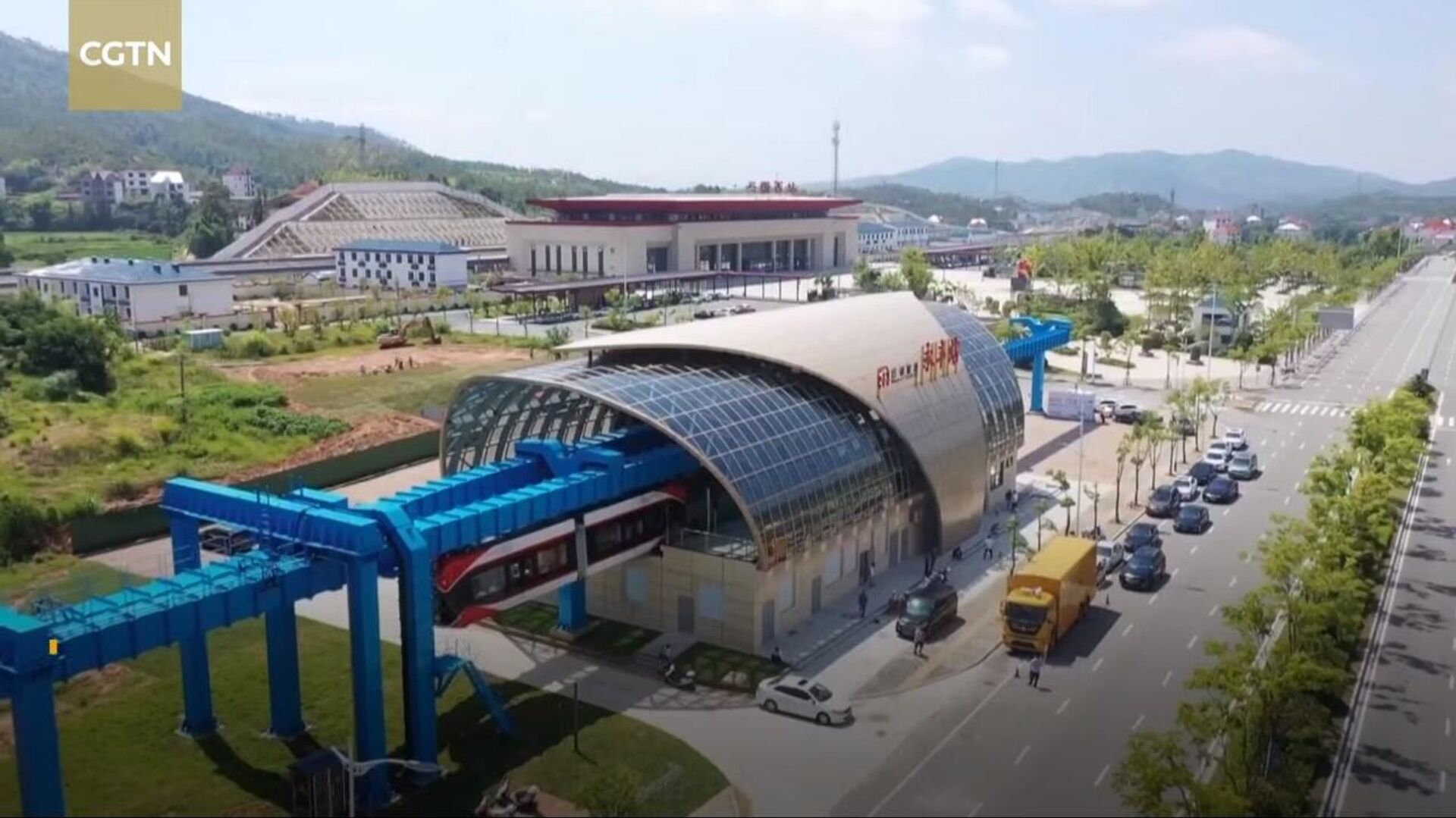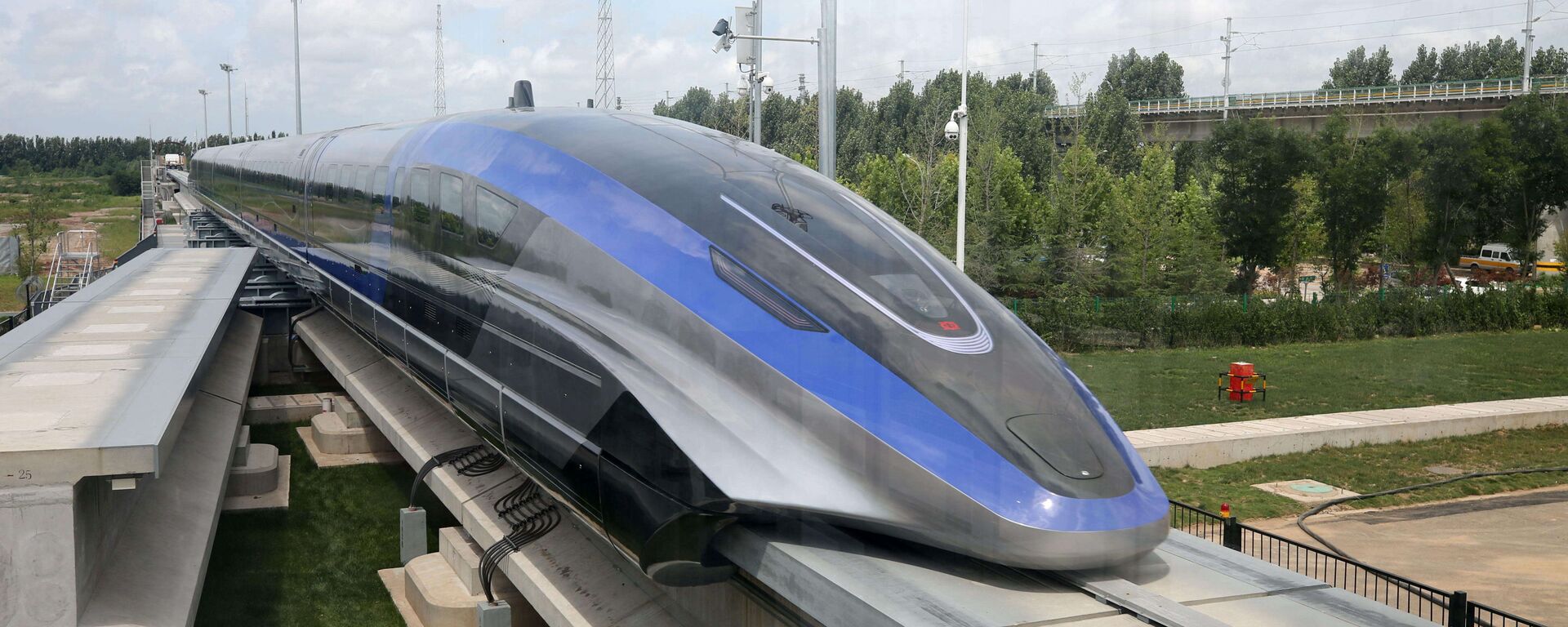https://sputnikglobe.com/20220817/china-launches-worlds-first-permanent-magnetic-levitation-train--1099708044.html
China Launches World's First Permanent Magnetic Levitation Train
China Launches World's First Permanent Magnetic Levitation Train
Sputnik International
The new variant of maglev can't boast the jet-like speeds that its competitors running on superconducting magnets can, but it uses considerably less... 17.08.2022, Sputnik International
2022-08-17T18:56+0000
2022-08-17T18:56+0000
2022-08-17T18:56+0000
science & tech
china
magnetic levitation train (maglev)
https://cdn1.img.sputnikglobe.com/img/07e6/08/11/1099707778_0:2:1277:720_1920x0_80_0_0_503f10ce8f103df512b863b9f0f1b8b6.jpg
China has revealed the world’s first functioning permanent magnetic levitation (PML) maglev – train set in motion using the power of magnets. The 800 meters-long test line was installed in Jiangxi province.Maglevs do not have wheels and their carriages are suspended in the air and set in motion using a set of magnets. Most maglevs rely on superconducting magnets – the super-cooled magnets allow trains to reach speeds almost rivalling that of modern aircraft due to the lack of friction in the process. However, maintaining extremely low magnet temperatures is both complicated and energy-intensive.The creators of PML instead relied on permanent rare earth magnets. The technology still consumes electricity to move the train, but less than superconducting magnets. Furthermore, the PML maglev line does not consume electricity during a train's stop. In general, PML is believed to be 31% more energy-efficient than superconducting alternatives.The payoff of using PML is speed: the maglev line installed in Jiangxi province only reaches 80 kilometres per hour and can carry two carriages with 88 people on board currently. The technology is fairly new and so further advances in terms of speed, capacity and efficiency may be around the corner.
https://sputnikglobe.com/20210720/chinas-speediest-train-a-600-kmh-maglev-rolls-off-assembly-line-in-qingdao-1083420670.html
china
Sputnik International
feedback@sputniknews.com
+74956456601
MIA „Rossiya Segodnya“
2022
Tim Korso
https://cdn1.img.sputnikglobe.com/img/07e6/03/0d/1093831826_0:0:216:216_100x100_80_0_0_e3f43a960af0c6c99f7eb8ccbf5f812c.jpg
Tim Korso
https://cdn1.img.sputnikglobe.com/img/07e6/03/0d/1093831826_0:0:216:216_100x100_80_0_0_e3f43a960af0c6c99f7eb8ccbf5f812c.jpg
News
en_EN
Sputnik International
feedback@sputniknews.com
+74956456601
MIA „Rossiya Segodnya“
Sputnik International
feedback@sputniknews.com
+74956456601
MIA „Rossiya Segodnya“
Tim Korso
https://cdn1.img.sputnikglobe.com/img/07e6/03/0d/1093831826_0:0:216:216_100x100_80_0_0_e3f43a960af0c6c99f7eb8ccbf5f812c.jpg
science & tech, china, magnetic levitation train (maglev)
science & tech, china, magnetic levitation train (maglev)
China Launches World's First Permanent Magnetic Levitation Train
The new variant of maglev can't boast the jet-like speeds that its competitors running on superconducting magnets can, but it uses considerably less electricity.
China has revealed the world’s first functioning permanent magnetic levitation (PML) maglev – train set in motion using the power of magnets. The 800 meters-long test line was installed in Jiangxi province.
Maglevs do not have wheels and their carriages are suspended in the air and set in motion using a set of magnets. Most maglevs rely on superconducting magnets – the super-cooled magnets allow trains to reach speeds almost rivalling that of modern aircraft due to the lack of friction in the process. However, maintaining extremely low magnet temperatures is both complicated and energy-intensive.
The creators of PML instead relied on permanent rare earth magnets. The technology still consumes electricity to move the train, but less than superconducting magnets. Furthermore, the PML maglev line does not consume electricity during a train's stop. In general, PML is believed to be 31% more energy-efficient than superconducting alternatives.
The payoff of using PML is speed: the maglev line installed in Jiangxi province only reaches 80 kilometres per hour and can carry two carriages with 88 people on board currently. The technology is fairly new and so further advances in terms of speed, capacity and efficiency may be around the corner.



